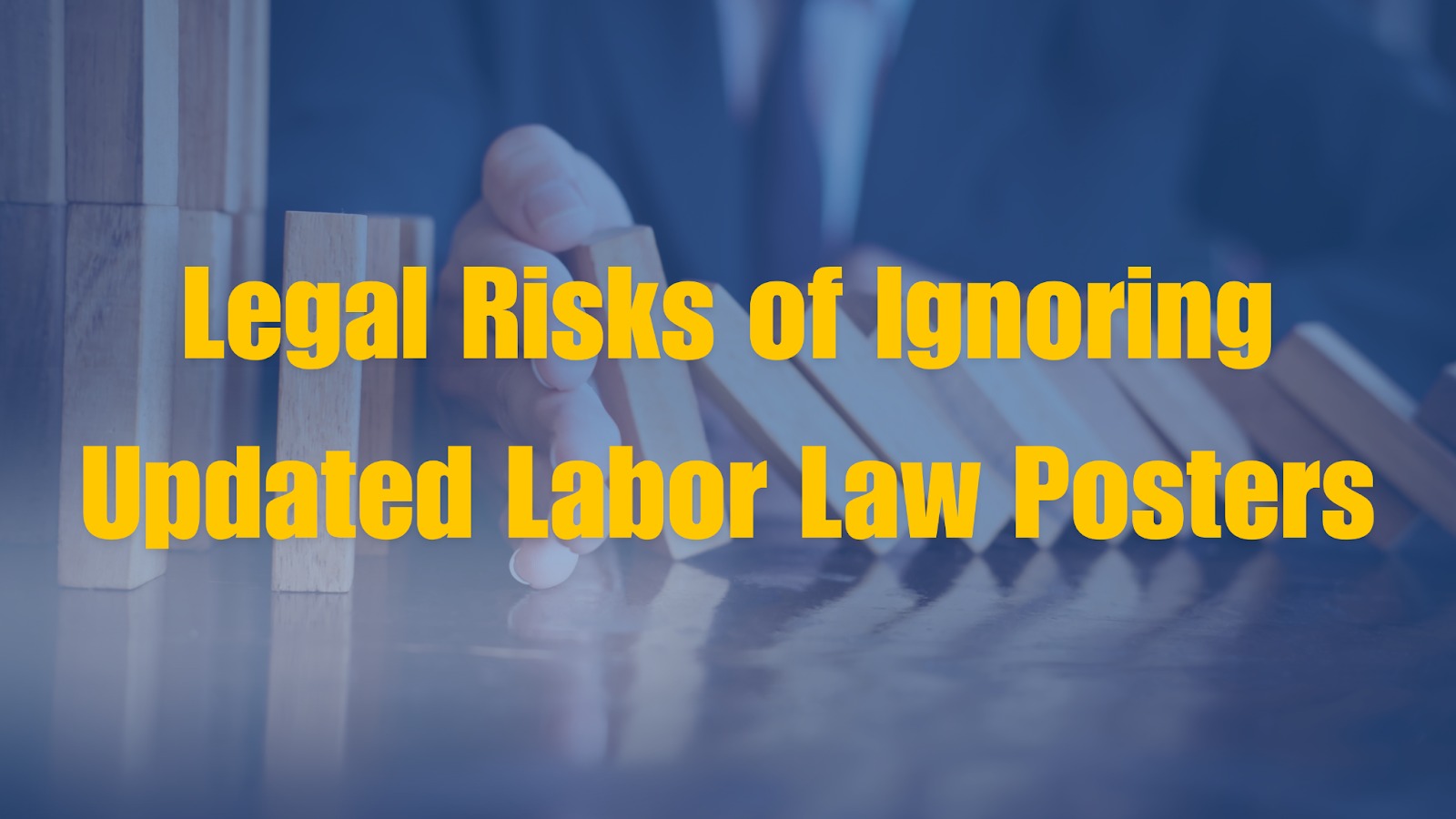The Legal Risks of Ignoring Updated Labor Law Posters
Labor Law Posters: Simplifying Compliance for Employers
Every employer in the United States with at least one employee is required to post the current and relevant labor law posters for their workers. Many organizations take the position that this is just a low-level administrative responsibility that doesn’t require their attention. Ultimately, however, the impact of not addressing poster compliance can be a serious issue. Missing or outdated posters can harm your legal standing, make your company seem dishonest in disputes, and can expose your company to lawsuits from employees asserting that they were improperly made unaware of their rights.
The Department of Labor, OSHA, and the EEOC have all noted that poster compliance is a primary enforcement priority for 2025. Current OSHA fines start at $16,550 per violation and go as high as $165,514 for repeated and willfully violating the law. Noncompliance with this obligation doesn’t just mean that you missed an entry to check off from your list of tasks, it means that you are now exposed to potential costly repercussions.
Federal Posting Requirements Every Employer Should Understand
Federal law requires six key workplace posters for nearly all employers. Knowing and maintaining these is the cornerstone of compliance.
- FLSA Poster (Fair Labor Standards Act): This familiar notice outlines federal wage and hour rules. It was last updated in May 2023 to include the PUMP Act, extending nursing break protections to all employees. The DOL says older versions are now invalid and must be replaced. Skipping this update can cost up to $1,000 per offense.
- OSHA “Job Safety and Health: It’s the Law” Poster: Required for all OSHA-covered employers, it explains workers’ rights to safe conditions. As of 2025, standard violations incur $16,550 fines, with daily penalties for continued noncompliance and up to $165,514 for repeat or willful breaches.
- EEOC “Know Your Rights” Poster: This newer version, issued in June 2023, adds coverage under the Pregnant Workers Fairness Act (PWFA). Employers with 15+ employees must post it visibly. Fines start at $569 per violation but can rise for repeated failures.
- FMLA Poster (Family and Medical Leave Act): Mandatory for employers with 50+ staff, this notice clarifies leave entitlements and obligations. Updated in April 2023, noncompliance now carries $189 penalties per infraction.
- EPPA Poster (Employee Polygraph Protection Act): Even if lie detector tests aren’t used, this poster is still required. Penalties reach $26,262 in 2025.
- USERRA Poster (Uniformed Services Employment and Reemployment Rights Act): This protects military service members. While there’s no direct fine, missing it still signals noncompliance.
Recent Updates: PWFA and PUMP Act
Two major 2023 laws reshaped posting requirements.
The Pregnant Workers Fairness Act (PWFA), effective June 27, 2023, mandates reasonable accommodations for pregnancy-related conditions in workplaces with 15+ employees. The EEOC’s 2024 final rule provided detailed compliance guidance, and any employer still displaying the old EEO poster is technically noncompliant.
Similarly, the PUMP Act, effective December 2022, broadened nursing break protections to all workers. The updated FLSA poster now highlights these rights under a new “PUMP AT WORK” section. Employers still using pre-2023 posters risk enforcement penalties.
State and Local Posting Complexity
Federal rules are just the starting line. States impose their own requirements, sometimes a dozen or more posters covering wage laws, discrimination, and more. In some states, like California or New York, the total can exceed 20 postings per location. Add in counties or cities, and that number can climb even higher.
Recent trends show new mandates such as veteran benefits postings (Massachusetts, Rhode Island, Minnesota, Maine) and even AI-related employment notices, which Colorado will enforce starting February 1, 2026. State fines generally range between $100 and $1,000 per violation, though California can assess up to $7,000.
The Real Legal Risks: Beyond Fines
Money isn’t the only risk here. Missing posters can quietly erode your legal footing.
- Loss of Statute of Limitations Defense: Courts may decide an employer who never posted required notices can’t use time limits as a defense. That means old claims can suddenly become valid.
- Evidence of Bad Faith: In wage or discrimination cases, judges often see missing posters as a sign the employer disregards worker rights.
- FMLA Civil Liability: Failing to post can directly interfere with employee rights, creating new grounds for lawsuits.
- Employee Awareness Claims: Workers can claim ignorance of their rights if notices weren’t visible. That argument tends to stick when posters are outdated or missing.
Audit Compliance: Where Inspectors Look First
Inspectors from OSHA, the DOL, the EEOC, and the OFCCP often begin audits by checking posters. For federal contractors, this step is almost guaranteed.
Smart compliance habits include:
- Posting in visible, high-traffic areas such as break rooms and entrances
- Replacing posters immediately after updates
- Keeping documentation and photos as proof
- Ensuring visibility in every building or department where employees work
Remote and Hybrid Workforce Challenges
Remote work hasn’t erased posting obligations, it just made them trickier. The DOL allows electronic posting if remote employees rarely visit the office, but physical postings must still exist at each worksite. In practice, the best approach is both digital copies on the company intranet and physical ones in the office.
Action Steps for 2025 Compliance
Employers can stay ahead by:
- Auditing current posters to confirm all are present and readable
- Replacing outdated versions (especially FLSA, EEOC, and FMLA posters)
- Documenting compliance with photos and posting dates
- Notifying remote employees through email or an online portal
- Scheduling quarterly reviews to catch changes early
- Using free resources from state agencies or the DOL website
Conclusion
Failing to update your labor law posters may seem minor, but it can create significant and unfounded challenges for your company. Not only is compliance about avoiding fines, but it is also a representation of your company’s values, adherence to the law, and proper stewardship. In a few short years, the consequences of noncompliance can become severe. By 2025, penalties can be $165,514. Finding time to manage your federal and state labor posters is a relatively simple way to safeguard your business and enhance your reputation.




